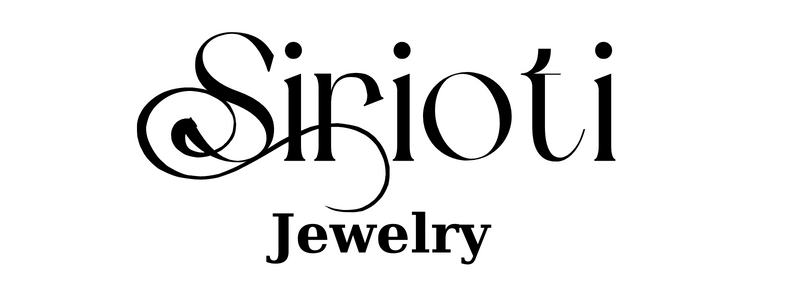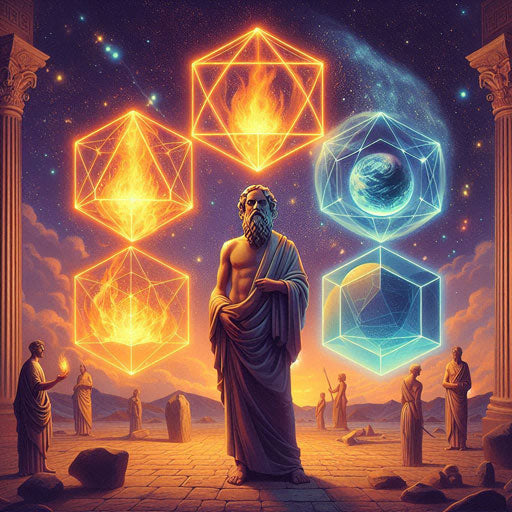Plato, one of the most influential philosophers in Western thought, explored the fundamental nature of the universe in his dialogue Timaeus. This work not only delves into metaphysics but also introduces a fascinating cosmology where the physical world is constructed from four classical elements—earth, water, air, and fire—each associated with a specific geometric form. Additionally, a fifth element, Aether, or Quintessence, represents the divine and eternal nature of the cosmos. This blog post will take you through these elements, their significance, and their profound impact on later philosophical and scientific thought.
Table of Contents
- Introduction
- The Four Classical Elements
- The Fifth Element: Aether or Quintessence
- Plato's Mathematical and Metaphysical Framework
- Conclusion
The Four Classical Elements
Plato’s Timaeus introduces us to a universe composed of four primary elements, each associated with a specific Platonic solid—a geometric shape that embodies its properties. These elements form the building blocks of all matter and reflect the intrinsic order and rationality of the cosmos.
Fire: The Element of Transformation

Fire, represented by the Tetrahedron, is the most active and dynamic of the elements. With its sharp points and four triangular faces, the tetrahedron symbolizes the transformative power of fire. This element is linked to heat, energy, and light, making it essential for processes of change and creation in the universe.
- Geometric Form: Tetrahedron (four faces)
- Properties: Sharp, dynamic, transformative
- Role: Governs heat, light, and processes of change
Air: The Breath of Life

Air, symbolized by the Octahedron, represents balance and mobility. The octahedron’s eight faces and symmetry reflect air’s gentle and pervasive nature. This element is associated with the breath of life, movement, and communication, filling the space between earth and heaven.
- Geometric Form: Octahedron (eight faces)
- Properties: Light, balanced, mobile
- Role: Governs breath, life, and communication
Water: The Fluid Force

Water, represented by the Icosahedron, is the element of fluidity and adaptability. The icosahedron’s twenty faces make it the most flexible of the Platonic solids, mirroring water’s ability to flow and take the shape of its container. Water is crucial for life, connecting with emotions and intuition.
- Geometric Form: Icosahedron (twenty faces)
- Properties: Fluid, adaptable, life-sustaining
- Role: Governs emotions, intuition, and sustains life
Earth: The Foundation of Existence

Earth, symbolized by the Cube, is the most solid and stable of the elements. The cube’s six square faces represent the stability and permanence of earth, which provides the foundation for all physical forms. This element is associated with structure, heaviness, and material existence.
- Geometric Form: Cube (six faces)
- Properties: Stable, dense, unchanging
- Role: Governs structure, materiality, and permanence
The Fifth Element: Aether or Quintessence

Beyond the four classical elements, Plato hints at a fifth element, Aether or Quintessence, which occupies the realm of the divine and the eternal. This element, often linked to the Dodecahedron, represents the substance that fills the heavens, embodying the purity and perfection of the cosmos.
- Geometric Form: Dodecahedron (twelve faces)
- Properties: Pure, divine, eternal
- Role: Governs the heavens and celestial bodies
Plato's Mathematical and Metaphysical Framework
Plato’s assignment of geometric forms to each element underscores his belief in the inherent order and rationality of the universe. The shapes known as the Platonic solids are crucial to understanding how Plato envisioned the physical and metaphysical worlds.
The Platonic Solids

The Platonic solids—tetrahedron, octahedron, icosahedron, and cube—are the only regular polyhedra that exist in three-dimensional space, where all faces, edges, and angles are identical. Plato associated each of these solids with an element, reflecting the idea that the universe is constructed from these perfect geometric forms.
Transformation and Interconnection
In Timaeus, the elements are not static; they can transform into one another through the rearrangement of their constituent triangles. This concept of transformation highlights the interconnectedness and constant flux of the natural world, where fire can become air, air can become water, and so forth.
Conclusion
Plato's exploration of the elements in Timaeus provides a profound insight into his vision of the cosmos—a universe that is both ordered and dynamic, where the physical world is built on a foundation of mathematical precision and metaphysical principles. The elements of earth, water, air, fire, and the divine Aether offer a glimpse into the ancient Greek understanding of nature and the intricate balance that sustains life and existence. These ideas have echoed through the centuries, influencing philosophy, science, and even modern thought, reminding us of the timeless quest to understand the fundamental nature of reality.
Interested in Greek mythology ? Visit our blog here

